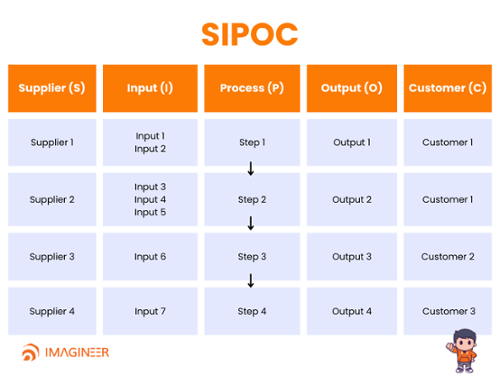Use Case: Apply DMAIC in the Finance Industry
As in the retail or manufacturing industry, the financial sector does not escape having a high volume of daily transactions. Each transaction is data...
If your goal is to improve a process, the first thing you must do is understand it. To do this, you need to get the information, define the step by step, identify the variables and build a diagram that allows the visualization of the process. In this blog, I explain a tool that will help you understand the process and needed improvement.
Index
Definition
SIPOC is an acronym that refers to: suppliers, inputs, process, outputs and customers. In practice, SIPOC is a diagram that allows visualizing a business macro-process and its main inputs and outputs in a simple and easy-to-read format.
As a tool, the SIPOC diagram is part of the Six Sigma methodology, Lean Manufacturing, and the combination of these: Lean Six Sigma. In other words, it is a continuous process improvement tool.
DMAIC: Make the continuous improvement of your processes a reality.

SIPOC elements
As I mentioned earlier, SIPOC is an acronym that reflects the elements that make up the diagram.

Step by step
To build a SIPOC diagram, you should follow the following steps:

Application and importance
The SIPOC diagram can have different applications, although it is mainly associated with continuous improvement projects, Six Sigma, and the "define" phase of the DMAIC methodology. This type of diagram is used to:
At the managerial and decision-making level, a SIPOC diagram can be beneficial since it summarizes the most critical information in a way that makes it easy to read and analyze. This allows the identification of activities that add little value, processes without defined responsibilities, lack or surplus of suppliers, etc.
The SIPOC takes on particular importance when seeking to optimize processes associated with the customer experience. It facilitates the visualization of all the elements that must enter, be transformed, and exit to the consumer, allowing the analysis and identification of opportunities for improvement.

As in the retail or manufacturing industry, the financial sector does not escape having a high volume of daily transactions. Each transaction is data...

It is first essential to identify where the gap is to improve a process. That is, you define the current situation, analyze it and find the...

The manufacturing industry constantly faces challenges in its production processes that can affect efficiency, quality, and profitability.